"Zavihki" na koncu krila
Moderator: blisk
96 prispevkov
• Stran 1 od 5 • 1, 2, 3, 4, 5
"Zavihki" na koncu krila
Izgled in/ali namembnost?
Nekaj sem zasledil, ko je Drela komentiral pri F5D, bom objavil, ko najdem.
Moje skromno osebno mnenje: Veliko več izgled, kot dejanska namembnost. Dejanska namembnost je pri pristajanju - tako oblikovan konec krila se ne zatakne.
Nekaj sem zasledil, ko je Drela komentiral pri F5D, bom objavil, ko najdem.
Moje skromno osebno mnenje: Veliko več izgled, kot dejanska namembnost. Dejanska namembnost je pri pristajanju - tako oblikovan konec krila se ne zatakne.
Nimate dovoljenj za ogled prilog tega prispevka.
Sakura Racing XI Sport Master (Endurance, stock, mild modified, modified), Hyper GTB E, Tekno EB48, itd...
-
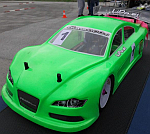
mihah - Forumski odvisnež
- Prispevkov: 2683
- Pridružen: 22.11.2002, 17:04
- Kraj: Mengeš
nekje sem slišal da naj bi taki zaključki pomagal pri lovlenju termike (samo ne vem a navzgor ali navzdol zakrivleni)

lahko(verjetno ) da se motim
) da se motim 
lahko(verjetno
-

overlord_tm - Naš človek :)
- Prispevkov: 132
- Pridružen: 06.05.2004, 14:28
- Kraj: Domžale - Vir
spaca157 napisal/-a:Ja pa po mojem tudi naredi malo bolj trdn zaključek krila.
Hmm, če bi si človek preprosto predstavljal, zaključek krila kot jih imajo elipsasta krila je najbolj "trdnen". Nič stran ne štrli - Nič za polomit.
Pri teh "šmekipekijih" pa moraš tisto špičko že pri transportu zelo pazit.
_______
Andraž, kje si izvedel to za lovljenje termike?
Sakura Racing XI Sport Master (Endurance, stock, mild modified, modified), Hyper GTB E, Tekno EB48, itd...
-

mihah - Forumski odvisnež
- Prispevkov: 2683
- Pridružen: 22.11.2002, 17:04
- Kraj: Mengeš
Oblika konice kril je največkrat sicer res bolj "tako od oka" da je model bolj šmeksi, je pa pri visokosposobnih modelih stvar, ki mu lahko letalne sposobnosti precej izboljša, ali pa čisto pokvari. Finta je v tem, da naj bi s krilniki (kot se wingletom reče po domače) zmanjšali inducirani upor krila - in s tem zboljšati letalne lastnosti v posebne namene ali kot je očitno pri potniških letalih - recimo zaradi manjšega upora prihraniti na gorivu. Upor pa je posebej na F5D modelu kar precejšen minus, a ne?
http://www.mh-aerotools.de/airfoils/winglets.htm
http://www.bionik.tu-berlin.de/user/mic ... g_old.html
http://www.aerodyn.org/Drag/tip_devices.html
Stvar je bila od začetka precej empirična, za njo so precej matematično in fizikalno močne teorije numeričnih metod in veliko eksperimentiranja. Laično rečeno krilniki na jadralnih modelih pomagajo pri prečni stabilnosti modela (predvsem) v zavoju in preprečujejo oziroma omilijo zdrs na krilo pri nekoordiniranem letu. Če je krilo skonstruirano prav, potem se model dobesedno "uleže" v zavoj in ga pri kroženju v dviganju ni potrebno venomer popravljati po smeri in nagibu.
Lp, Sašo
http://www.mh-aerotools.de/airfoils/winglets.htm
http://www.bionik.tu-berlin.de/user/mic ... g_old.html
http://www.aerodyn.org/Drag/tip_devices.html
Stvar je bila od začetka precej empirična, za njo so precej matematično in fizikalno močne teorije numeričnih metod in veliko eksperimentiranja. Laično rečeno krilniki na jadralnih modelih pomagajo pri prečni stabilnosti modela (predvsem) v zavoju in preprečujejo oziroma omilijo zdrs na krilo pri nekoordiniranem letu. Če je krilo skonstruirano prav, potem se model dobesedno "uleže" v zavoj in ga pri kroženju v dviganju ni potrebno venomer popravljati po smeri in nagibu.
Lp, Sašo
-
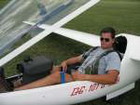
frcac - Naš človek :)
- Prispevkov: 248
- Pridružen: 15.12.2003, 16:49
- Kraj: Godovič
Ne bom rekel da je to ista pašta, je pa v praktično isti funkciji - z obliko konico krila (s krilnikom ali brez) doseči čimmanjši upor in zmogljivosti krila po želji - pri podkritičnih hitrostih ali pa pri visokih hitrosti. A ni zanimivo, da lahko par sto tonski airliner samo s pravo obliko krilnih konic prihrani do 10% goriva ?
Pri nekaterih letalih kot naprimer TurboRaven je to definitivno samo šminka, pri hitrostnih modelih pa po moje ne. Ko najdem kakšen uporaben link z nazorno prikazanimi porazdelitvami hitrosti oziroma kar je še uporabneje v ta namen izobarami, ga prpopam notr (lahko pa da iz svojega rokava kaj potegne Mitja).
Lp, Sašo
Pri nekaterih letalih kot naprimer TurboRaven je to definitivno samo šminka, pri hitrostnih modelih pa po moje ne. Ko najdem kakšen uporaben link z nazorno prikazanimi porazdelitvami hitrosti oziroma kar je še uporabneje v ta namen izobarami, ga prpopam notr (lahko pa da iz svojega rokava kaj potegne Mitja).
Lp, Sašo
-

frcac - Naš človek :)
- Prispevkov: 248
- Pridružen: 15.12.2003, 16:49
- Kraj: Godovič
Sašo, sem vse to prebral iz različnih virov. Ampak tole preberi:
http://airtransportbiz.free.fr/Techniqu ... nglet.html
Therefore, the choice between including or discluding a winglet design is one of aerodynamics versus pragmatic considerations such as structural weight and construction/maintenance costs. As drag reduction is a science that is not fully understood, the debate for and against winglets for certain missions will continue. Given wing span limitations at the world’s ever more congested airports there is a finite point at which aerodynamics will lose out to hard infrastructure requirements
debata na rcgroups:
http://www.rcgroups.com/forums/showthre ... 446&page=3
Začelo pa se je na 2. strani:
http://www.rcgroups.com/forums/showthre ... ge=2&pp=50
Drela:
I just stumbled into this thread, and I have a question:
Why do most of the European planes have the swept/upturned/pointy tips? To me they make no sense. I see no advantages, but they do have many drawbacks:
* Don't allow full-span ailerons
* More difficult to build
* More material at tip (more roll and yaw inertia)
* Sweep causes larger torsional loads on wing
The argument of improved span efficiency, even if true, is difficult to support. You could take the wetted area of the swept tip "point" and instead add it as a small span extension. This would certainly give a lower induced drag than the fancy tip shape.
As an experiment, Mike Lachowski decided to modify one of his older Caracho F3B gliders with the swept, pointy tips. He sawed off the tips at the end of the aileron, and added homemade plain tips like those on the Supra, with ailerons running all the way out. He says the glider improved in every way: better launch, better roll control, less tip stall tendency.
http://airtransportbiz.free.fr/Techniqu ... nglet.html
Therefore, the choice between including or discluding a winglet design is one of aerodynamics versus pragmatic considerations such as structural weight and construction/maintenance costs. As drag reduction is a science that is not fully understood, the debate for and against winglets for certain missions will continue. Given wing span limitations at the world’s ever more congested airports there is a finite point at which aerodynamics will lose out to hard infrastructure requirements
debata na rcgroups:
http://www.rcgroups.com/forums/showthre ... 446&page=3
Začelo pa se je na 2. strani:
http://www.rcgroups.com/forums/showthre ... ge=2&pp=50
Drela:
I just stumbled into this thread, and I have a question:
Why do most of the European planes have the swept/upturned/pointy tips? To me they make no sense. I see no advantages, but they do have many drawbacks:
* Don't allow full-span ailerons
* More difficult to build
* More material at tip (more roll and yaw inertia)
* Sweep causes larger torsional loads on wing
The argument of improved span efficiency, even if true, is difficult to support. You could take the wetted area of the swept tip "point" and instead add it as a small span extension. This would certainly give a lower induced drag than the fancy tip shape.
As an experiment, Mike Lachowski decided to modify one of his older Caracho F3B gliders with the swept, pointy tips. He sawed off the tips at the end of the aileron, and added homemade plain tips like those on the Supra, with ailerons running all the way out. He says the glider improved in every way: better launch, better roll control, less tip stall tendency.
Sakura Racing XI Sport Master (Endurance, stock, mild modified, modified), Hyper GTB E, Tekno EB48, itd...
-

mihah - Forumski odvisnež
- Prispevkov: 2683
- Pridružen: 22.11.2002, 17:04
- Kraj: Mengeš
mihah napisal/-a:Andraž, kje si izvedel to za lovljenje termike?
en bivši modelar povedu, ki se je kar dosti ukvarjal z to aerodinamiko itd...
koliko sm ga zastopu naj bi te navzdol zakrivlene konice kril pomagale k bolšemu nabiranju visine
-

overlord_tm - Naš človek :)
- Prispevkov: 132
- Pridružen: 06.05.2004, 14:28
- Kraj: Domžale - Vir
Se mi zdi da se pogovarjate o tem kako je narejen zakljucek na samem koncu krila.
Ce sem razumel prvo sliko, je njen namen pokazati tlorisno obliko krila na koncu, in nima zveze s kakimi wingletsi (krilniki itd..)
To dvoje je treba lociti. Zakljucek na modelu s prve slike je takoimenovana "turska sablja". To ni Winglet !
Prva varianta..torej tlorisna oblika krila vpliva na inducirani upor zaradi svoje izpeljave krila, druga varianta (krilnik) pa aerodinamicno podaljsa krilo (kot ce bi krilnike popeglal v horizontalo) in se krilo obnasa kakor da bi imelo vecjo razpetino, s tem vecjo vitkost, kar v koncnem sestevku prinese manjsi inducirani upor. Seveda pa krilnik zaradi svoje postavljenosti v skoraj navpicen polozaj s sabo prinese se nekaj cisto novih stvarii, to pa je povecanje upora ce letalo leti v traverzi, in pa stabilnostne "efekte" povezane s to dodano bocno povrsino.
Pri zelo hitrih letalih ki letijo hitro pod zelo malimi kolicniki vzgona, ima inducirani upor bolj mali delez celotnega upora letala, zato mislim da so za hitre "masine" krilniko bolj nepotrebna navlaka ki se na modelu vozi bolj zastonjkarsko....na vrsto za delo pride le, ko se letalo upocasni na vecje kolicnike vzgona.
No, pa da se povrnem nazaj na Mihovo sliko krilnega zakljucka z eno kratko anegdoto:
V enem intervjuju so Burta Rutana vprasali kako je preracunal krilne zakljucke na letalu (letalo je imelo krilne zakljucke in tudi smerni rep tako oblikovan kot je na Mihovi sliki). Pa je odvrnil nekako takole:" nic nisem racunal! Tako obliko je mati narava v miljonih let izoblikovala na morskih psih, in zagotovo je naredila bolje kot pa bi jaz lahko preracunal! zato smo naredili samo kopijo".
No Rutana nisem dobesedno citiral, ker pisem kar iz glave, a dejansko je bilo njegov odgovor nekako taksen kot sem napisal.
LP Mitja
Ce sem razumel prvo sliko, je njen namen pokazati tlorisno obliko krila na koncu, in nima zveze s kakimi wingletsi (krilniki itd..)
To dvoje je treba lociti. Zakljucek na modelu s prve slike je takoimenovana "turska sablja". To ni Winglet !
Prva varianta..torej tlorisna oblika krila vpliva na inducirani upor zaradi svoje izpeljave krila, druga varianta (krilnik) pa aerodinamicno podaljsa krilo (kot ce bi krilnike popeglal v horizontalo) in se krilo obnasa kakor da bi imelo vecjo razpetino, s tem vecjo vitkost, kar v koncnem sestevku prinese manjsi inducirani upor. Seveda pa krilnik zaradi svoje postavljenosti v skoraj navpicen polozaj s sabo prinese se nekaj cisto novih stvarii, to pa je povecanje upora ce letalo leti v traverzi, in pa stabilnostne "efekte" povezane s to dodano bocno povrsino.
Pri zelo hitrih letalih ki letijo hitro pod zelo malimi kolicniki vzgona, ima inducirani upor bolj mali delez celotnega upora letala, zato mislim da so za hitre "masine" krilniko bolj nepotrebna navlaka ki se na modelu vozi bolj zastonjkarsko....na vrsto za delo pride le, ko se letalo upocasni na vecje kolicnike vzgona.
No, pa da se povrnem nazaj na Mihovo sliko krilnega zakljucka z eno kratko anegdoto:
V enem intervjuju so Burta Rutana vprasali kako je preracunal krilne zakljucke na letalu (letalo je imelo krilne zakljucke in tudi smerni rep tako oblikovan kot je na Mihovi sliki). Pa je odvrnil nekako takole:" nic nisem racunal! Tako obliko je mati narava v miljonih let izoblikovala na morskih psih, in zagotovo je naredila bolje kot pa bi jaz lahko preracunal! zato smo naredili samo kopijo".
No Rutana nisem dobesedno citiral, ker pisem kar iz glave, a dejansko je bilo njegov odgovor nekako taksen kot sem napisal.
LP Mitja
Zadnjič spremenil ultralajt, dne 26.10.2004, 14:10, skupaj popravljeno 2 krat.
-

ultralajt - Forumski veteran
- Prispevkov: 913
- Pridružen: 07.04.2004, 16:35
As drag reduction is a science that is not fully understood...
Nisem še "požrl" dovolj znanja aerodinamike da bi lahko res razložil kako ni kaj, posebej v taki temi kot je tukaj - pro et contra. Očitno pa je da precej izmed teh stvari nesporno deluje - in res se posnemanje narave v teh rečeh večkrat odreže šokantno dobro... Tako da se opravičujem da sem odplaval iz začrtane teme in da povzamem moj prvi odgovor v kratkem stavku: stvar ni samo oblika, ampak je poizkus (koliko uspešen to je pa drug problem) zmanjšati inducirani upor krila. Kar se pa tiče debat in dokazov v stilu
Why do most of the European planes have the swept/upturned/pointy tips? To me they make no sense.
As an experiment, Mike Lachowski decided to modify one of his older Caracho F3B gliders with the swept, pointy tips. He sawed off the tips at the end of the aileron, and added homemade plain tips like those on the Supra, with ailerons running all the way out. He says the glider improved in every way: better launch, better roll control, less tip stall tendency.
pa v to rahlo dvomim tako in drugače - včasih je tudi tu prisoten predvsem "placebo" efekt ko se ti zdi da je neka nova sprememba naredila iz nekaj približno letečega odličen visokosposoben model, stanje ozračja od starta pa do starta modela ni identično tako da je po moje tako razliko težko okarakterizirati kot da se "je vse spremenilo na bolje". Vse mi rahlo diši po debati USA vs. Evropa - ne vemo sicer zakaj bi oni/mi bili boljši, mal se je pa vseeno treba drkat med sabo. Američanom gre v nos da so v evropi jadralni modeli bolj doterani, evropejci cedijo sline po ameriških motornih akrobatih...
Kukrkoli že, lepi zaključki kril na Flashu...
LP, Sašo
-

frcac - Naš človek :)
- Prispevkov: 248
- Pridružen: 15.12.2003, 16:49
- Kraj: Godovič
Neki tuki ne štima, če bi bili ti zaključki dekoracija in upor bi pri hitrih modelih, ki jih pa mimogrede vsi imajo, hitro žaga zapela pa bi šli zaključki bbye bye. 
Za res hitre nebi vedu vem pa da LS8 od Mibota brez zaključkov leti ko kanta
Za res hitre nebi vedu vem pa da LS8 od Mibota brez zaključkov leti ko kanta
-

MC GAYVER - Stara sablja
- Prispevkov: 1522
- Pridružen: 06.03.2003, 18:18
- Kraj: Ljubljana
V aerodinamiki je precej "megle", ko stvari so izkustveno preverljive, na papirju pa stvari ne morejo dokazati.
Sam gledam na stvar praktično, kakšen model želim imet oz. kakšne lastnosti od njega pričakujem?
Dva primera:
Če bi delal jadralca, ki bo večino časa letel v termičnem stebru, bi mu dal precej V-loma, ne preveč ušpičene zaključke, da imajo krila dovolj opore- podobnost s kanjo pri letu v vzgorniku. Kar vidiš, kako se "uleže" v zavoj.
In vprašanje:
" Kako izgledajo "krilni zaključki" ali kar winglet-i pri kanji?"
Če bi pa delal F3F specialko, ki večino časa leti na preletu z večjo hitrostjo, pa bi izbral vitko, na koncih zašiljeno krilo-žiletko, malo V-loma,da krilo čimbolj direktno nosi in nič, oz. minimalno zavihkov za manj občutljivosti na rukerje-podobno kot pri galebih.
V praksi, pa za večino modelov pride v poštev neka srednja pot.
Pa seveda, lepo na oko mora bit !!
!!
Lp, Boštjan
Sam gledam na stvar praktično, kakšen model želim imet oz. kakšne lastnosti od njega pričakujem?
Dva primera:
Če bi delal jadralca, ki bo večino časa letel v termičnem stebru, bi mu dal precej V-loma, ne preveč ušpičene zaključke, da imajo krila dovolj opore- podobnost s kanjo pri letu v vzgorniku. Kar vidiš, kako se "uleže" v zavoj.
In vprašanje:
" Kako izgledajo "krilni zaključki" ali kar winglet-i pri kanji?"
Če bi pa delal F3F specialko, ki večino časa leti na preletu z večjo hitrostjo, pa bi izbral vitko, na koncih zašiljeno krilo-žiletko, malo V-loma,da krilo čimbolj direktno nosi in nič, oz. minimalno zavihkov za manj občutljivosti na rukerje-podobno kot pri galebih.
V praksi, pa za večino modelov pride v poštev neka srednja pot.
Pa seveda, lepo na oko mora bit
Lp, Boštjan
-
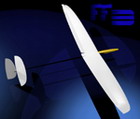
Bošti - Član
- Prispevkov: 48
- Pridružen: 31.07.2004, 17:52
Nevem kako to da nisem opazil te rubrike danes ko sem nalagal svoje "zavihke" v rubriko F5j nadeljevanje.
Strinjam se z Mc Gayverjem! Če so vingletsi pravilno izdelani in je krilo prilagojeno vingletsom lahko le ti bistveno pripmorejo k boljšim letalnim sposobnostim modela. Sam sem jih kar dosti preizkušal na telstarju in sem skozi te ugotovitve izdelal svoje novo krilo. Sem pa prišel do ugotovitve da lahko z različnimi vpadnimi koti samih vingletsov bistveno izboljšamo penjanje in z spremembo kota, ko preidemo v fazo jadranja izboljšamo le to.
Moje naslednje krilo bo vsebovalo vse to kar sem na kratko opisal zgoraj, pri tem mi je zmanjkalo časa .
Še tukaj bom objavil fotografije dokončane KAZOME da bodo slike v pravi rubriki
Strinjam se z Mc Gayverjem! Če so vingletsi pravilno izdelani in je krilo prilagojeno vingletsom lahko le ti bistveno pripmorejo k boljšim letalnim sposobnostim modela. Sam sem jih kar dosti preizkušal na telstarju in sem skozi te ugotovitve izdelal svoje novo krilo. Sem pa prišel do ugotovitve da lahko z različnimi vpadnimi koti samih vingletsov bistveno izboljšamo penjanje in z spremembo kota, ko preidemo v fazo jadranja izboljšamo le to.
Moje naslednje krilo bo vsebovalo vse to kar sem na kratko opisal zgoraj, pri tem mi je zmanjkalo časa .
Še tukaj bom objavil fotografije dokončane KAZOME da bodo slike v pravi rubriki
Nimate dovoljenj za ogled prilog tega prispevka.
Ne verjemi vsem kar piše!!!
Chinks
Chinks
-

Chinks - Naš človek :)
- Prispevkov: 173
- Pridružen: 03.08.2004, 17:05
- Kraj: Poljane nad Šk. Loko
Re: "Zavihki" na koncu krila
Miha je napisu:
Moje skromno osebno mnenje: Veliko več izgled, kot dejanska namembnost. Dejanska namembnost je pri pristajanju - tako oblikovan konec krila se ne zatakne.
Miha dobra fora!!!!
Potem odstranimo še krila, da se sigurno ne zatakne!
Andraž vsekakor to drži ampak ne samo termike vendar tudi zračnih tokovnic:
Okoli, na, ob, pod krilom se dogajajo stvari ki jih z očesom ne moremo videti. To pa še nepomeni, da ne obstajajo.
1-Vemo da zračni tok zdrsne ob krilu (translatorno gibanje zračnega toka), 2-vemo da nekaj zračnega toka zaokroži okoli krila in na koncu ZVRTINČEN zapusti krilo (cirkulatorno gibanje zračnega toka), 3- nekaj zračnega toka pa zdrsne po ceotni spodnji površini krila proti koncu in tudi ta ZVRTINČEN zapusti krilo. Širše kot je krilo močnejše je to vrtinčenje in posledično tudi večji induciran upor. S temi zaključki torej zmanjšamo slednjega kot je napisal že ultralajt. Pri daljših krilih in večjih hitrostih pa lahko odpravimo flater saj z temi zaključki zmanjšamo vrtinčenje tudi za 80-90% tako, da krilo lepo zdrsne skozi zrak.
Svoje vingletse sem poimenoval WDL-AS (wind dont let-air sistem) in prav temu so tudi namenjeni.
Okoli vingletsov bi se dalo še marsikaj povedat, bomo malo pokramljali po tekmi v Gorenji vasi seveda če koga zanima.
Moje skromno osebno mnenje: Veliko več izgled, kot dejanska namembnost. Dejanska namembnost je pri pristajanju - tako oblikovan konec krila se ne zatakne.
Miha dobra fora!!!!
Potem odstranimo še krila, da se sigurno ne zatakne!
Andraž vsekakor to drži ampak ne samo termike vendar tudi zračnih tokovnic:
Okoli, na, ob, pod krilom se dogajajo stvari ki jih z očesom ne moremo videti. To pa še nepomeni, da ne obstajajo.
1-Vemo da zračni tok zdrsne ob krilu (translatorno gibanje zračnega toka), 2-vemo da nekaj zračnega toka zaokroži okoli krila in na koncu ZVRTINČEN zapusti krilo (cirkulatorno gibanje zračnega toka), 3- nekaj zračnega toka pa zdrsne po ceotni spodnji površini krila proti koncu in tudi ta ZVRTINČEN zapusti krilo. Širše kot je krilo močnejše je to vrtinčenje in posledično tudi večji induciran upor. S temi zaključki torej zmanjšamo slednjega kot je napisal že ultralajt. Pri daljših krilih in večjih hitrostih pa lahko odpravimo flater saj z temi zaključki zmanjšamo vrtinčenje tudi za 80-90% tako, da krilo lepo zdrsne skozi zrak.
Svoje vingletse sem poimenoval WDL-AS (wind dont let-air sistem) in prav temu so tudi namenjeni.
Okoli vingletsov bi se dalo še marsikaj povedat, bomo malo pokramljali po tekmi v Gorenji vasi seveda če koga zanima.
Zadnjič spremenil Chinks, dne 17.10.2004, 10:23, skupaj popravljeno 1 krat.
Ne verjemi vsem kar piše!!!
Chinks
Chinks
-

Chinks - Naš človek :)
- Prispevkov: 173
- Pridružen: 03.08.2004, 17:05
- Kraj: Poljane nad Šk. Loko
Jaz mislim, da bi se dalo to zelo enostavno in lepo probat kaj se dogaja na krilu. en ventilator oz. speed400 pa en prop gor:)) Potem pa aparat za delanje megle pa gremo šopat meglo čez krila..Pomojem, bi se lepo vidlo...
lp
matjaz
lp
matjaz
-------------------------------------------------------
Uspeh je za drzne....
Uspeh je za drzne....
-
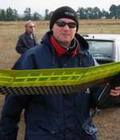
luigidon - Forumski veteran
- Prispevkov: 558
- Pridružen: 13.01.2004, 20:14
- Kraj: Domžale - Vir
Matjaž zakaj bi odkrival toplo vodo če jo že poznamo. Stvar se lahko samo še bolj dotera. Paziti pa je potrebno, da je krilo prilagojeno na določen tip vingletov, ne moreš kar izdelat krila, ugotoviš da ni najboljše, nato obesit nanj vinglete in pričakovat fenomenalne spremembe.
Že dolgo pred vingleti so rahlo vitopirili krila da so odstranili vrtinčenje in s tem negativne posledice vrtinčenja s tem dobiš manjši vpadni kot nakoncu krila.
Že dolgo pred vingleti so rahlo vitopirili krila da so odstranili vrtinčenje in s tem negativne posledice vrtinčenja s tem dobiš manjši vpadni kot nakoncu krila.
Ne verjemi vsem kar piše!!!
Chinks
Chinks
-

Chinks - Naš človek :)
- Prispevkov: 173
- Pridružen: 03.08.2004, 17:05
- Kraj: Poljane nad Šk. Loko
Chinks napisal/-a:Že dolgo pred vingleti so rahlo vitopirili krila da so odstranili vrtinčenje in s tem negativne posledice vrtinčenja s tem dobiš manjši vpadni kot nakoncu krila.
Brca v temo! Zvitje kril (geometrijsko) nima nič z vrtinčenjem! Služi samo temu, da pri velikih vpadnih kotih konci kril še vedno nosijo! Na upor pa vpliva negativno; zato so "izumili" aerodinamično zvitje!
Glede aerodinamike je pa sigurno krilo brez vsakega zvitja najbolj ugodno; zatakne se pri minimalki, ko se začne veselo zvračati na krilo!
Sicer pa se strinjam MC Ajvarjem (glede zaključkov kril, drugače praviloma ne
Pa še to; tople vode okoli oblike zaključkov kril še nikakor na poznamo! Vsa letalska industrija posveča veliko energije ravno tem delu avijonov! Ne pomeni pa, da kar deluje pri velikih letalih, pride v poštev pri modelih; Mr. Reynolds nam je malo prekrižal načrte
L.P. Samo
-
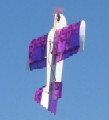
samo3D - Član
- Prispevkov: 88
- Pridružen: 05.12.2003, 13:38
- Kraj: Celje
Samo preden rečeš neko stvar se najprej prepričaj o njej ne pa da to še napišeš. Predlagal bi ti da si prebereš malo literature preden začneš metat polena pod noge drugim. Se pa strinjam z tabo in je res da vitoperjeno krilo pri večjih upadnih kotih še vedno nosi. S tem so zmanjšali minimalno hitrost letala in pa INDUCIRANI OTPOR po domače vrtinčenje. Hotel sem napisat tudi to pa nisem ker smo govorili okoli vingletsov. Preden obesiš vingletse na krilo pa izdelaj prvo primerno krilo zanje!!!!
Slika spodaj povzetek iz knjige
Gradivo: LETEČI MODELI
Avtorja : Nenad in Ivan Velikonja
Leto izdaje: 1948
Samo preberi si ne bo ti žal!!!!!!
Slika spodaj povzetek iz knjige
Gradivo: LETEČI MODELI
Avtorja : Nenad in Ivan Velikonja
Leto izdaje: 1948
Samo preberi si ne bo ti žal!!!!!!
Nimate dovoljenj za ogled prilog tega prispevka.
Ne verjemi vsem kar piše!!!
Chinks
Chinks
-

Chinks - Naš človek :)
- Prispevkov: 173
- Pridružen: 03.08.2004, 17:05
- Kraj: Poljane nad Šk. Loko
Zdravo...!!
Tkole no. Moje mišljenje. Aerodinamika pravih letal in aerodinamika malih letal "MODELOV" je menda precej drugačna. Aerodinamiko pravih letal poznam dobro, test opravil z 98%... )
)
Prvič, hitrosti niso enake, drugič ne teža. Za primer vam dam da, vrhunski model propada 0.4m/s. Isto pa propada jadralno letalo ASH-25M s tem da je težje in in ima večjo površino ter upor, nosi dva pilota in pomožni motor. Torej, lahko si izmišljujete krila na vse možne načine in tudi zaključke, pa ne boste dost pridobil. Mogoče malenkost, ki je zanemarljiva. Bolš, da se posvetite kašni drugi izbolšavi. Recimo, čim manjši hodi krilc, dober pogon, čimmanj zračnosti, ki veliko več povečujejo upor kot zaključki. Čimbol stabilen avijon, da je čim manj premikanj krmil, Izogibat se V- repcev kt so aerodinamično PODEN. Enkup upora in izničenje sil. Grdo. Razen mogoče, da so lažji. To je edina taka lastnost. Pa še bi lohka našteval. Torej, drugače razmišlat o tekmovalnem modelu.
Lep pozdrav
Kot je že omenu samo3d Mr. Reynolds nam je prekrižu vse. To drži, in nebi se jz po velikih bratih zgledoval.
Tkole no. Moje mišljenje. Aerodinamika pravih letal in aerodinamika malih letal "MODELOV" je menda precej drugačna. Aerodinamiko pravih letal poznam dobro, test opravil z 98%...
Prvič, hitrosti niso enake, drugič ne teža. Za primer vam dam da, vrhunski model propada 0.4m/s. Isto pa propada jadralno letalo ASH-25M s tem da je težje in in ima večjo površino ter upor, nosi dva pilota in pomožni motor. Torej, lahko si izmišljujete krila na vse možne načine in tudi zaključke, pa ne boste dost pridobil. Mogoče malenkost, ki je zanemarljiva. Bolš, da se posvetite kašni drugi izbolšavi. Recimo, čim manjši hodi krilc, dober pogon, čimmanj zračnosti, ki veliko več povečujejo upor kot zaključki. Čimbol stabilen avijon, da je čim manj premikanj krmil, Izogibat se V- repcev kt so aerodinamično PODEN. Enkup upora in izničenje sil. Grdo. Razen mogoče, da so lažji. To je edina taka lastnost. Pa še bi lohka našteval. Torej, drugače razmišlat o tekmovalnem modelu.
Lep pozdrav
Kot je že omenu samo3d Mr. Reynolds nam je prekrižu vse. To drži, in nebi se jz po velikih bratih zgledoval.
Submarine Type 214
- ProX
- Novinec
- Prispevkov: 16
- Pridružen: 21.04.2004, 12:23
- Kraj: Kokra
96 prispevkov
• Stran 1 od 5 • 1, 2, 3, 4, 5
Kdo je na strani
Po forumu brska: 0 registriranih uporabnikov in 2 gostov
